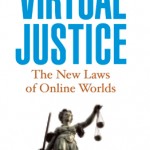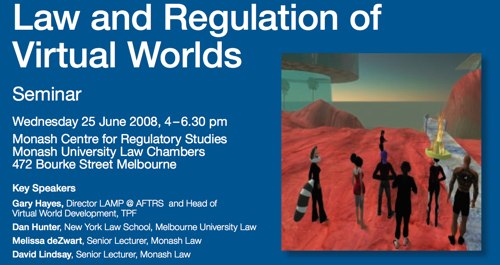Another great initiative coming out of the University of Western Australia:
A Second Life machinima has been custom made for the first time for one of the major units for a degree programme at UWA with the efforts of UWA Associate Professor Natalie Skead, former champion of the international UWA film challenges, Laurina Hawks of Berlin, and UWA virtual worlds founder Jay Jay Jegathesan.
The brilliant short film (machinima) “Equity & Trusts: Estoppel Tutorial”, was created by Laurina based on a script written by Professor Skead for the LAWS5103 unit, Equity & Trusts, which is a 2nd Year compulsory postgraduate unit for the Juris Doctor (law degree). It was shown to students during tutorials that were a trigger for discussions on the Estoppel principle of law.
Here’s the video:


 The Second Life blogosphere
The Second Life blogosphere  Late last year, Grossman Tucker Perreault & Pfleger announced that they had successfully registered as a trademark the multidimensional likeness of Aimee Weber, the Second Life avatar of New York content-creator and businesswoman Alyssa LaRoche.
Late last year, Grossman Tucker Perreault & Pfleger announced that they had successfully registered as a trademark the multidimensional likeness of Aimee Weber, the Second Life avatar of New York content-creator and businesswoman Alyssa LaRoche. Virtual environments and the public Internet sport a bewildering array of economies, from purely fantasy economies to real money trading between users. Fundamentally, many of these are currency-based economies which we all understand – you purchase something you value and give something of value in exchange. That is, you buy something you want with some manner of currency.
Virtual environments and the public Internet sport a bewildering array of economies, from purely fantasy economies to real money trading between users. Fundamentally, many of these are currency-based economies which we all understand – you purchase something you value and give something of value in exchange. That is, you buy something you want with some manner of currency.
Recent Comments